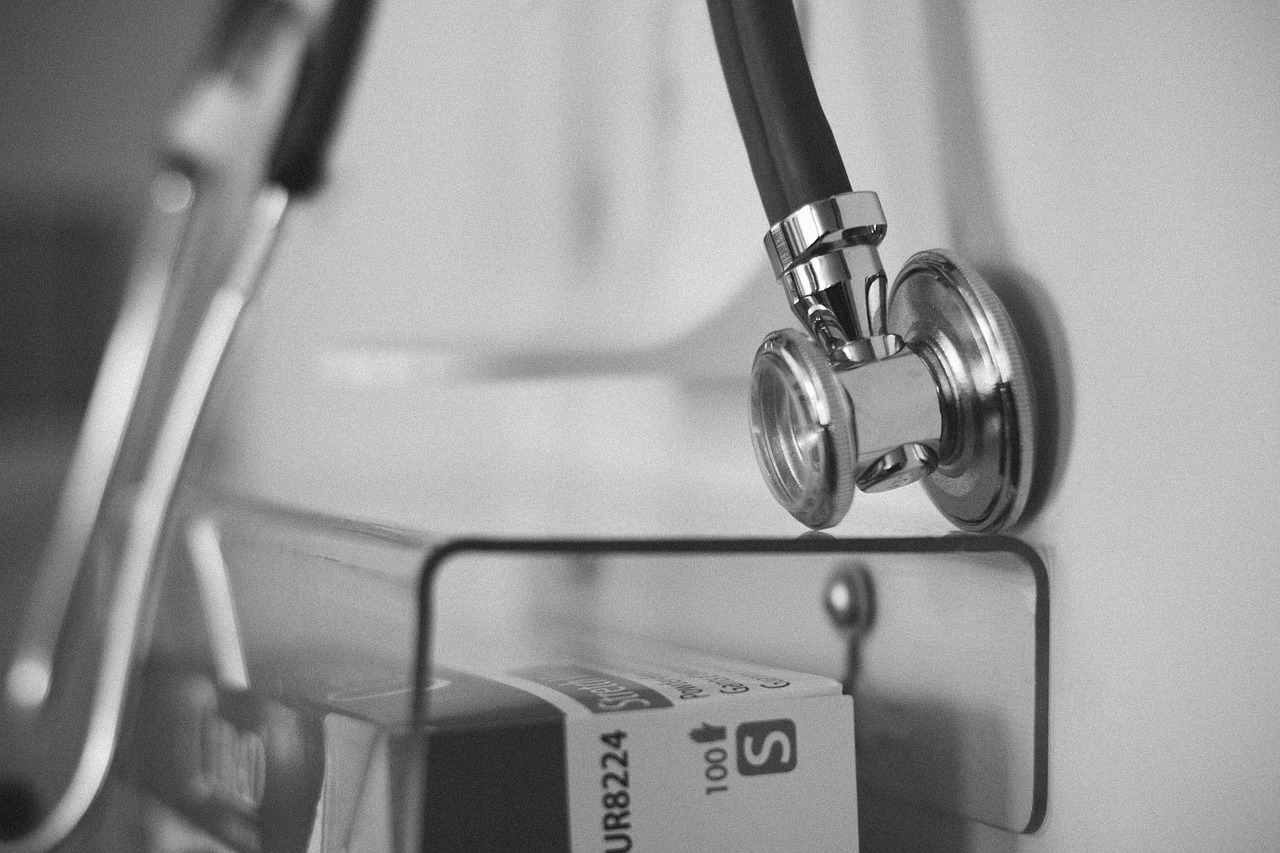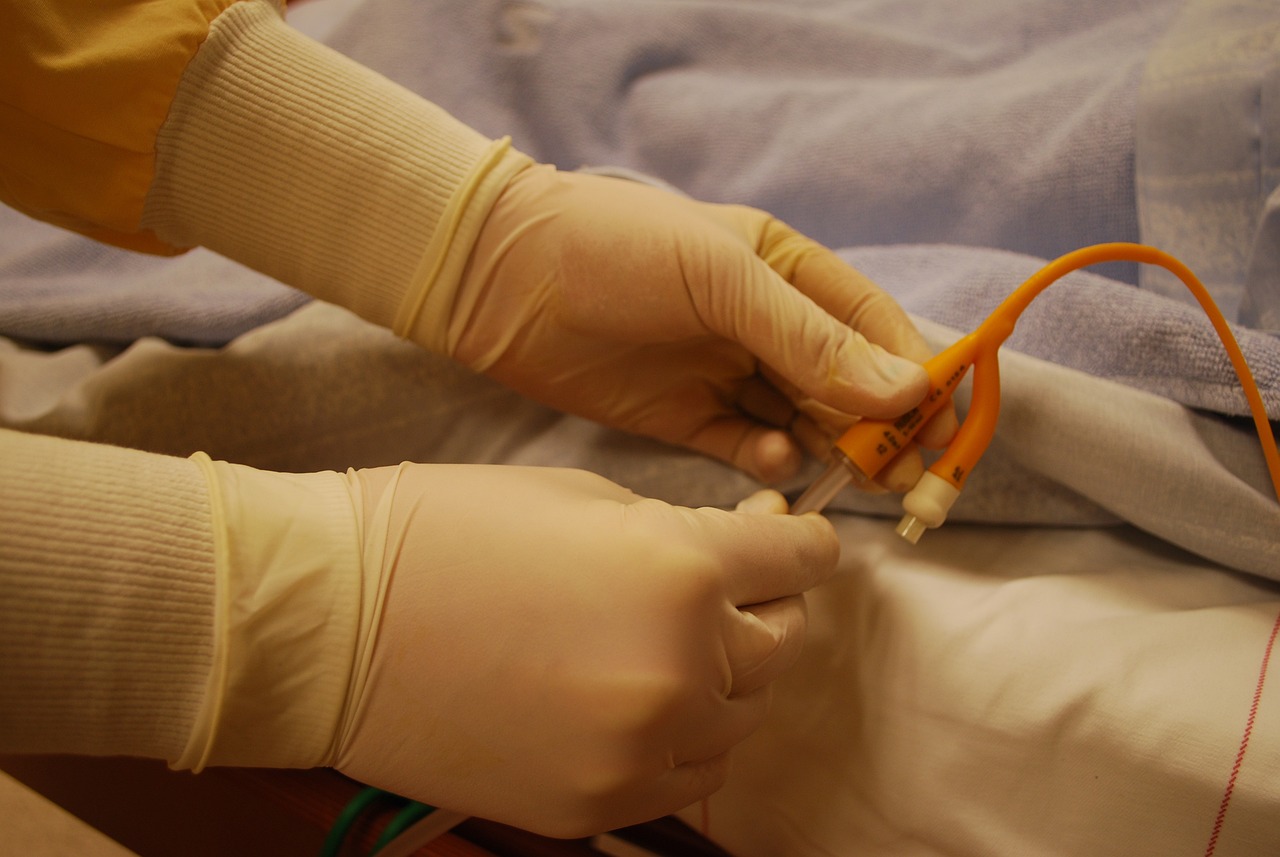Healthcare Strategies for Dealing with a Pandemic
In the face of a pandemic, the healthcare landscape transforms rapidly, demanding innovative strategies and robust planning. As we navigate through these uncertain times, it becomes apparent that the effectiveness of our healthcare systems hinges on preparedness, swift response, and recovery measures. This article delves into the multifaceted approaches that can be adopted to enhance public health outcomes during such crises. We will explore how different elements work together like the gears in a well-oiled machine, ensuring that every aspect of healthcare is optimized for the challenges that arise during a pandemic.
Effective preparedness planning is crucial for healthcare systems to respond swiftly to pandemics. Think of it as laying the groundwork before a storm hits; if you’re not ready, the consequences can be dire. This planning involves meticulous resource allocation, comprehensive training, and the development of robust protocols to ensure readiness for potential outbreaks. By establishing clear guidelines and procedures, healthcare facilities can mitigate chaos and confusion when the need arises. It’s essential to have a well-defined plan that includes:
- Stockpiling necessary medical supplies and equipment
- Establishing communication channels for timely information dissemination
- Creating a flexible workforce that can adapt to changing demands
These measures not only enhance the capacity of healthcare systems but also instill confidence among healthcare workers and the public alike.
Establishing rapid response teams is another pivotal strategy that allows for the swift mobilization of healthcare professionals during a pandemic. These teams are like the first responders of the healthcare world, essential for managing patient care and containing the spread of infection. When a crisis strikes, having a dedicated group that can quickly assess the situation, deploy resources, and provide immediate care can make all the difference. They act as the frontline warriors, equipped to tackle the challenges head-on.
Regular training and simulation exercises are critical components that equip healthcare workers with the necessary skills to handle pandemic situations. Imagine being a firefighter; without practice, when the alarm rings, panic can set in. Similarly, these practice drills enhance confidence and efficiency during actual outbreaks, ensuring that healthcare professionals are not just reacting but are prepared to act decisively and effectively.
Collaboration among various healthcare disciplines fosters a comprehensive approach to pandemic response. When doctors, nurses, pharmacists, and public health officials work together, it’s like an orchestra playing in harmony. Each professional brings their unique expertise to the table, ensuring that all aspects of care and prevention are addressed effectively. This synergy can lead to innovative solutions and improved patient outcomes.
Engaging communities in preparedness efforts is another vital strategy. When the community is informed and involved, it helps raise awareness and promotes adherence to health guidelines. Think of it as a team effort; when everyone plays their part, the outcome is far better. Community engagement can take many forms, such as:
- Organizing informational sessions
- Distributing educational materials
- Encouraging local leaders to advocate for health measures
Ultimately, this collective effort leads to better outcomes during a pandemic.
Effective resource management ensures that healthcare facilities have the necessary supplies, equipment, and personnel to handle increased patient loads during a pandemic. This involves not just having enough masks and ventilators but also ensuring that healthcare workers are adequately supported and not overwhelmed. It’s like running a marathon; pacing and proper hydration are crucial for endurance.
In today’s digital age, telehealth services provide a safe alternative for patients to receive care during a pandemic. This innovative approach reduces the risk of virus transmission while maintaining access to essential healthcare services. Imagine being able to consult your doctor from the comfort of your home—no waiting rooms, no crowded spaces, just you and your healthcare provider addressing your concerns.
Implementing remote patient monitoring systems enables healthcare providers to track patient health from a distance. This is especially important during a pandemic when minimizing physical contact is key. By utilizing technology, healthcare providers can ensure timely interventions and reduce the burden on healthcare facilities. It’s like having a safety net that catches potential health issues before they escalate.
Finally, providing access to mental health services during a pandemic is vital for addressing the psychological impact on individuals. The stress, anxiety, and uncertainty that accompany such crises can take a toll on mental well-being. Offering support through counseling, hotlines, and online resources can help individuals cope with these challenges. It’s essential to recognize that mental health is just as important as physical health, especially in times of crisis.
What is the most important strategy for pandemic preparedness?
Preparedness planning is crucial, as it lays the foundation for effective response and recovery.
How can communities engage in pandemic preparedness?
Communities can organize informational sessions, distribute educational materials, and encourage local leaders to advocate for health measures.
Why is telehealth important during a pandemic?
Telehealth reduces the risk of virus transmission while maintaining access to essential healthcare services.

Preparedness Planning
This article explores effective healthcare strategies that can be implemented during a pandemic, including preparedness, response, and recovery measures to enhance public health outcomes.
Effective preparedness planning is crucial for healthcare systems to respond swiftly to pandemics. Just like a fire drill prepares students for potential emergencies, healthcare systems must develop a robust framework that allows for rapid action when a health crisis strikes. This planning involves several key components, including resource allocation, training, and the development of protocols that ensure readiness for potential outbreaks.
Firstly, resource allocation is about more than just having enough masks or ventilators on hand—it's about strategically positioning these resources where they will be most effective. Consider this: if a storm is brewing, you wouldn't just gather supplies randomly; you'd prioritize areas that are most likely to be affected. Similarly, healthcare systems need to analyze data and trends to predict where outbreaks might occur and ensure that resources are available in those locations.
Training is another essential aspect of preparedness. It’s not enough to have the right tools; healthcare professionals need to know how to use them effectively. Regular training sessions and workshops can help equip staff with the knowledge and skills necessary to handle a surge of patients. For instance, simulation exercises can mimic real-life scenarios, allowing healthcare workers to practice their responses in a controlled environment. This not only builds confidence but also enhances efficiency during actual outbreaks. Imagine being a firefighter who has never seen a blaze—would you feel prepared? The same principle applies here.
Furthermore, developing clear protocols is vital. These protocols serve as a roadmap during chaotic times, guiding healthcare professionals on best practices for patient care and infection control. For example, protocols might include guidelines on triaging patients, managing isolation, and ensuring communication among team members. Clarity in these procedures can significantly reduce confusion and improve response times.
Moreover, preparedness planning isn’t just an internal affair; it requires cross-disciplinary collaboration. Different sectors of healthcare, from public health officials to emergency responders, must work together to create a comprehensive approach to pandemic response. This collaboration ensures that all aspects of care and prevention are addressed effectively. When various healthcare disciplines unite, it’s like creating a well-oiled machine that can adapt to the demands of a crisis.
Lastly, engaging the community in preparedness efforts is crucial. When individuals are informed and involved, they are more likely to adhere to health guidelines during a pandemic. Community engagement can take many forms, such as informational campaigns, workshops, or even social media outreach. Just think about it: if your neighbor knows how to protect themselves and others, the entire community benefits. This collective awareness can lead to better outcomes during a pandemic.
In summary, effective preparedness planning is the backbone of a successful pandemic response. By focusing on resource allocation, training, protocol development, cross-disciplinary collaboration, and community engagement, healthcare systems can enhance their readiness for any health crisis that may come their way.
- What is the importance of preparedness planning in healthcare?
Preparedness planning enables healthcare systems to respond quickly and effectively during a pandemic, minimizing the impact on public health. - How can communities get involved in preparedness efforts?
Communities can participate in preparedness efforts by attending workshops, sharing information, and following health guidelines to help prevent the spread of disease. - What role does training play in pandemic preparedness?
Training equips healthcare workers with the necessary skills and confidence to manage patient care and respond to emergencies effectively.

Rapid Response Teams
The emergence of a pandemic can be likened to a storm brewing on the horizon—unexpected and potentially devastating. To weather this storm, establishing is not just a strategic move; it's a necessity. These teams are the frontline warriors, ready to mobilize at a moment's notice, ensuring that healthcare systems can respond effectively to the sudden surge in patient needs and the complexities of managing infectious diseases. But what exactly do these teams do, and how do they function?
Rapid response teams are composed of a diverse group of healthcare professionals, including doctors, nurses, epidemiologists, and public health officials. Their primary goal is to manage patient care and contain the spread of infection during a pandemic. The beauty of these teams lies in their flexibility and speed. When a pandemic strikes, every second counts, and having a dedicated team that can quickly assess the situation, implement care protocols, and coordinate with other healthcare facilities is crucial.
One of the key components of these rapid response teams is their ability to conduct real-time assessments. As soon as a potential outbreak is identified, these teams spring into action, gathering data on infection rates, patient demographics, and resource availability. This information is vital for making informed decisions on how to allocate resources effectively. For example, if a particular area is experiencing a spike in cases, the team can quickly deploy additional medical supplies or personnel to that location, preventing the healthcare system from becoming overwhelmed.
Training and simulation exercises play an essential role in the effectiveness of rapid response teams. Regular drills ensure that team members are familiar with their roles and responsibilities, and they can operate seamlessly under pressure. These simulations not only build confidence but also enhance the team's ability to work together in high-stress environments. Imagine a well-oiled machine, each part moving in harmony to achieve a common goal—this is what effective training cultivates.
Moreover, cross-disciplinary collaboration is a hallmark of successful rapid response teams. When professionals from various healthcare fields come together, they create a holistic approach to pandemic response. For instance, while doctors focus on treatment protocols, epidemiologists analyze data trends, and public health officials work on community outreach. This synergy ensures that every aspect of care and prevention is addressed, leading to more comprehensive outcomes.
Community engagement is another critical factor in the success of rapid response teams. By involving local communities in preparedness efforts, these teams can raise awareness about health guidelines and encourage adherence to preventive measures. Think of it as planting seeds of knowledge; when communities are well-informed, they can better protect themselves and others during a pandemic. This collective effort not only enhances public health outcomes but also fosters a sense of solidarity and resilience among community members.
In conclusion, rapid response teams are the backbone of an effective healthcare strategy during a pandemic. Their ability to mobilize quickly, assess situations accurately, and collaborate across disciplines makes them indispensable. As we continue to navigate the challenges posed by infectious diseases, investing in these teams will undoubtedly yield significant benefits for public health and safety.
- What is the main role of rapid response teams during a pandemic?
Rapid response teams are responsible for managing patient care, containing the spread of infection, and coordinating resources effectively during a pandemic.
- How are rapid response teams trained?
These teams undergo regular training and simulation exercises to prepare for high-stress situations, ensuring that all members know their roles and can work together efficiently.
- Why is community engagement important for rapid response teams?
Engaging communities helps raise awareness about health guidelines and promotes adherence to preventive measures, ultimately leading to better public health outcomes.

Training and Simulation
This article explores effective healthcare strategies that can be implemented during a pandemic, including preparedness, response, and recovery measures to enhance public health outcomes.
Effective preparedness planning is crucial for healthcare systems to respond swiftly to pandemics. This includes resource allocation, training, and developing protocols to ensure readiness for potential outbreaks.
Establishing rapid response teams allows for quick mobilization of healthcare professionals during a pandemic. These teams are essential for managing patient care and containing the spread of infection.
Regular training and simulation exercises equip healthcare workers with the necessary skills to handle pandemic situations. Imagine a fire drill; it’s all about preparation. Just as firefighters need to know how to respond to flames, healthcare professionals must be ready to tackle the chaos of a pandemic head-on. These training sessions not only boost confidence but also enhance efficiency during actual outbreaks. By simulating real-life scenarios, healthcare teams can practice their responses to various challenges, from triaging patients to managing limited resources.
Incorporating a variety of training methods is essential. For instance, role-playing can be an effective way to prepare staff for high-pressure situations. Through these exercises, participants can experience the emotional and psychological strains of a pandemic, allowing them to develop coping strategies. Additionally, online simulations can provide a flexible learning environment, making it easier for healthcare workers to participate without the constraints of their demanding schedules.
Moreover, it's crucial to regularly assess the effectiveness of these training programs. Feedback from participants can lead to valuable improvements, ensuring that the training remains relevant and impactful. The ultimate goal is to create a workforce that is not just capable but also resilient. By fostering a culture of continuous learning and adaptation, healthcare systems can better navigate the uncertainties of a pandemic.
To illustrate the importance of training and simulation, consider the following table that outlines key components of effective training programs:
| Training Component | Description |
|---|---|
| Scenario-Based Drills | Simulate real-life pandemic situations for hands-on practice. |
| Interdisciplinary Workshops | Bring together professionals from various fields to enhance collaborative skills. |
| Online Learning Modules | Provide flexible training options that can be accessed anytime, anywhere. |
| Debriefing Sessions | Review and discuss training outcomes to identify areas for improvement. |
Collaboration among various healthcare disciplines fosters a comprehensive approach to pandemic response, ensuring that all aspects of care and prevention are addressed effectively.
Engaging communities in preparedness efforts helps raise awareness and promotes adherence to health guidelines, ultimately leading to better outcomes during a pandemic.
Effective resource management ensures that healthcare facilities have the necessary supplies, equipment, and personnel to handle increased patient loads during a pandemic.
Telehealth services provide a safe alternative for patients to receive care during a pandemic, reducing the risk of virus transmission while maintaining access to essential healthcare services.
Implementing remote patient monitoring systems enables healthcare providers to track patient health from a distance, ensuring timely interventions and reducing the burden on healthcare facilities.
Providing access to mental health services during a pandemic is vital for addressing the psychological impact on individuals, helping them cope with anxiety, stress, and other mental health challenges.
- What is the importance of training and simulation in healthcare? Training and simulation prepare healthcare workers for real-life scenarios, enhancing their skills and confidence in managing pandemics.
- How often should training exercises be conducted? Regular training exercises should be conducted at least quarterly to ensure that healthcare workers remain prepared and updated on best practices.
- What role do community engagement efforts play in pandemic preparedness? Community engagement raises awareness about health guidelines and encourages adherence, leading to improved public health outcomes during a pandemic.

Cross-Disciplinary Collaboration
Cross-disciplinary collaboration is not just a fancy term; it's a vital strategy that can make or break our response to a pandemic. Imagine a well-orchestrated symphony where each instrument plays its part perfectly, creating a harmonious sound. That's what effective collaboration among various healthcare disciplines looks like. When doctors, nurses, public health officials, and even social workers come together, they can address the multifaceted challenges of a pandemic far more effectively than when working in silos.
During a pandemic, the need for a comprehensive approach is paramount. For instance, while doctors focus on treating patients, public health experts analyze data to track the spread of the virus, and mental health professionals provide support for those affected by the crisis. This interconnectedness ensures that all aspects of care and prevention are addressed efficiently. When healthcare professionals from different fields collaborate, they can share insights, strategies, and resources that enhance overall patient care and community health.
Moreover, cross-disciplinary teams can facilitate innovative solutions that might not emerge within a single discipline. For example, a collaboration between epidemiologists and data scientists can lead to the development of predictive models that help forecast outbreaks, allowing for proactive measures rather than reactive ones. This kind of teamwork can significantly improve the effectiveness of interventions, ultimately saving lives.
However, fostering such collaboration requires breaking down traditional barriers. It’s essential to create an environment where open communication is encouraged, and team members feel valued for their unique contributions. Regular meetings, joint training sessions, and collaborative decision-making processes can help cultivate this spirit of teamwork. In doing so, we not only enhance our pandemic response but also build a resilient healthcare system that can withstand future challenges.
In summary, cross-disciplinary collaboration is a game-changer in our fight against pandemics. By bringing together diverse expertise and perspectives, we can create a more robust response that addresses the myriad challenges posed by infectious diseases. The future of healthcare hinges on our ability to work together—after all, we’re all in this together.
- What is cross-disciplinary collaboration?
Cross-disciplinary collaboration involves professionals from various fields working together towards a common goal, particularly in healthcare to enhance pandemic response.
- Why is collaboration important during a pandemic?
Collaboration allows for a comprehensive approach to tackle the complex challenges posed by a pandemic, improving patient care and public health outcomes.
- How can healthcare professionals collaborate effectively?
Effective collaboration can be achieved through open communication, joint training, and shared decision-making processes among different healthcare disciplines.

Community Engagement
is a vital component of any effective pandemic response strategy. When communities come together, they can create a robust support system that not only enhances preparedness but also mitigates the effects of the outbreak. Imagine a neighborhood where everyone is informed, proactive, and supportive—this is the power of community engagement. By involving local populations in health initiatives, we can foster a sense of ownership and responsibility toward public health.
One of the key aspects of community engagement is raising awareness. This can be achieved through various channels, including social media, community meetings, and local events. When people are informed about the risks associated with a pandemic and the measures they can take to protect themselves and others, they are more likely to adhere to health guidelines. For instance, educational campaigns can cover topics such as:
- Understanding symptoms and transmission of the virus
- Importance of vaccination and preventative measures
- Ways to support vulnerable populations
Moreover, community engagement is not just about spreading information; it’s also about creating a supportive environment. This can be achieved through initiatives such as neighborhood watch programs, volunteer groups, and local task forces. These groups can help coordinate resources, provide assistance to those in need, and ensure that everyone has access to critical information and services. For example, during a pandemic, volunteers can:
- Deliver groceries to the elderly or immunocompromised
- Facilitate online support groups for mental health
- Assist in the distribution of personal protective equipment (PPE)
Furthermore, engaging community leaders and influencers can amplify the message and reach a broader audience. When respected figures advocate for public health measures, it can significantly enhance compliance. This is akin to planting a seed—once the idea takes root, it can grow and flourish within the community.
In addition to these efforts, it’s crucial to establish feedback mechanisms that allow community members to voice their concerns and suggestions. This two-way communication fosters trust and ensures that the strategies implemented are relevant and effective. By actively listening to the community, healthcare providers can tailor their approaches to meet the specific needs of the population.
Ultimately, community engagement transforms the abstract concept of public health into a tangible reality. It empowers individuals, strengthens social bonds, and creates a united front against the challenges posed by a pandemic. When communities stand together, they not only protect themselves but also contribute to the overall resilience of the healthcare system.
Q1: Why is community engagement important during a pandemic?
A1: Community engagement fosters awareness, support, and compliance with health guidelines, which are crucial for effective pandemic response.
Q2: How can I get involved in community engagement efforts?
A2: You can join local volunteer groups, participate in awareness campaigns, or simply help your neighbors by sharing information and resources.
Q3: What role do community leaders play in pandemic response?
A3: Community leaders can advocate for public health measures, mobilize resources, and help disseminate important information effectively.

Resource Management
This article explores effective healthcare strategies that can be implemented during a pandemic, including preparedness, response, and recovery measures to enhance public health outcomes.
Effective preparedness planning is crucial for healthcare systems to respond swiftly to pandemics. This includes resource allocation, training, and developing protocols to ensure readiness for potential outbreaks.
Establishing rapid response teams allows for quick mobilization of healthcare professionals during a pandemic. These teams are essential for managing patient care and containing the spread of infection.
Regular training and simulation exercises equip healthcare workers with the necessary skills to handle pandemic situations. These practices enhance confidence and efficiency during actual outbreaks.
Collaboration among various healthcare disciplines fosters a comprehensive approach to pandemic response, ensuring that all aspects of care and prevention are addressed effectively.
Engaging communities in preparedness efforts helps raise awareness and promotes adherence to health guidelines, ultimately leading to better outcomes during a pandemic.
Effective resource management is the backbone of a successful healthcare response during a pandemic. Imagine a ship sailing through a storm; without the right navigational tools and supplies, it risks capsizing. Similarly, healthcare facilities must be equipped with adequate resources to handle increased patient loads and unexpected challenges. This involves not just the procurement of medical supplies, but also the strategic allocation of human resources, including doctors, nurses, and support staff.
One critical aspect of resource management is inventory control. Hospitals and clinics must maintain a detailed inventory of essential supplies, such as personal protective equipment (PPE), ventilators, and medications. By utilizing technology, healthcare facilities can implement real-time tracking systems that provide updates on stock levels, ensuring that they are never caught off guard. For example, a hospital might use a software system that alerts managers when supplies dip below a certain threshold, allowing them to reorder before running out.
Moreover, staffing flexibility is vital. During a pandemic, the demand for healthcare services can surge unexpectedly. Facilities must be prepared to adjust staffing levels rapidly. This might involve bringing in temporary staff or reallocating existing personnel to critical areas. Effective communication and scheduling systems can help ensure that the right people are in the right place at the right time.
To illustrate the importance of resource management, consider the following table that outlines key resources and their management strategies:
| Resource Type | Management Strategy |
|---|---|
| Medical Supplies | Implement real-time inventory tracking systems |
| Staffing | Flexible scheduling and rapid deployment of personnel |
| Equipment | Regular maintenance and contingency planning for shortages |
| Financial Resources | Budget forecasting and emergency funding strategies |
Ultimately, the goal of resource management during a pandemic is to ensure that healthcare systems are not only prepared to respond but can also adapt to changing circumstances. By prioritizing effective management strategies, healthcare facilities can significantly improve their ability to provide care, reduce patient wait times, and enhance overall public health outcomes.
Telehealth services provide a safe alternative for patients to receive care during a pandemic, reducing the risk of virus transmission while maintaining access to essential healthcare services.
Implementing remote patient monitoring systems enables healthcare providers to track patient health from a distance, ensuring timely interventions and reducing the burden on healthcare facilities.
Providing access to mental health services during a pandemic is vital for addressing the psychological impact on individuals, helping them cope with anxiety, stress, and other mental health challenges.
- What is resource management in healthcare? Resource management in healthcare refers to the strategic allocation and utilization of medical supplies, staff, and equipment to ensure optimal patient care during crises, such as pandemics.
- Why is preparedness planning important? Preparedness planning is essential as it equips healthcare systems with the necessary protocols and resources to respond effectively and swiftly to unexpected outbreaks.
- How does telehealth benefit patients during a pandemic? Telehealth provides a safe way for patients to receive medical consultations without the risk of exposure to infectious diseases, ensuring continuity of care.

Telehealth Implementation
This article explores effective healthcare strategies that can be implemented during a pandemic, including preparedness, response, and recovery measures to enhance public health outcomes.
Effective preparedness planning is crucial for healthcare systems to respond swiftly to pandemics. This includes resource allocation, training, and developing protocols to ensure readiness for potential outbreaks.
Establishing rapid response teams allows for quick mobilization of healthcare professionals during a pandemic. These teams are essential for managing patient care and containing the spread of infection.
Regular training and simulation exercises equip healthcare workers with the necessary skills to handle pandemic situations. These practices enhance confidence and efficiency during actual outbreaks.
Collaboration among various healthcare disciplines fosters a comprehensive approach to pandemic response, ensuring that all aspects of care and prevention are addressed effectively.
Engaging communities in preparedness efforts helps raise awareness and promotes adherence to health guidelines, ultimately leading to better outcomes during a pandemic.
Effective resource management ensures that healthcare facilities have the necessary supplies, equipment, and personnel to handle increased patient loads during a pandemic.
In today's rapidly changing healthcare landscape, stands out as a beacon of hope during a pandemic. It offers a safe, convenient alternative for patients to receive care without the risk of virus transmission that comes with traditional in-person visits. Imagine being able to consult your doctor from the comfort of your home, avoiding crowded waiting rooms, and still receiving top-notch medical advice! Telehealth not only enhances patient safety but also ensures that healthcare systems remain functional even under the strain of a pandemic.
One of the significant advantages of telehealth is its ability to maintain access to essential healthcare services. Patients can easily schedule virtual appointments, receive diagnoses, and even get prescriptions without stepping foot outside. This is especially important during a pandemic when healthcare facilities might be overwhelmed with patients. By utilizing telehealth, healthcare providers can triage patients more effectively, directing those who need immediate care to in-person visits while managing less critical cases remotely.
Moreover, telehealth is not just about video calls; it encompasses a range of services including remote patient monitoring. This technology allows healthcare providers to track vital signs and other health indicators from a distance. For instance, patients with chronic conditions can have their health monitored through wearable devices, transmitting data directly to their healthcare teams. This proactive approach leads to timely interventions, reducing the need for emergency visits and enhancing overall patient outcomes.
However, the implementation of telehealth does come with its challenges. Issues such as digital literacy and access to technology can hinder some populations from fully benefiting from these services. To tackle this, healthcare systems must invest in community outreach and education, ensuring that everyone understands how to use telehealth services effectively. Additionally, it’s essential to address privacy and security concerns to build trust among patients who may be hesitant to share sensitive information online.
As we navigate through these unprecedented times, the importance of mental health services cannot be overstated. Telehealth provides a crucial avenue for individuals to access mental health support, which is often overlooked during crises. Through virtual therapy sessions, people can discuss their feelings and cope with the anxiety and stress that a pandemic brings. This accessibility to mental health resources is vital for fostering resilience within communities.
Implementing remote patient monitoring systems enables healthcare providers to track patient health from a distance, ensuring timely interventions and reducing the burden on healthcare facilities. This technology not only enhances patient engagement but also provides healthcare professionals with real-time data to make informed decisions.
Providing access to mental health services during a pandemic is vital for addressing the psychological impact on individuals, helping them cope with anxiety, stress, and other mental health challenges. Telehealth offers a platform where individuals can seek help without the stigma of visiting a clinic in person.
- What is telehealth? Telehealth refers to the use of digital information and communication technologies to access healthcare services remotely.
- How does telehealth improve patient access? Telehealth allows patients to consult healthcare providers from home, reducing travel time and exposure to illnesses.
- Are telehealth services covered by insurance? Many insurance providers cover telehealth services, but it’s essential to check with your specific plan.
- What types of services can be provided through telehealth? Services can include consultations, follow-ups, mental health therapy, and remote patient monitoring.

Remote Patient Monitoring
In the face of a pandemic, Remote Patient Monitoring (RPM) emerges as a game-changer for healthcare delivery. Imagine a world where patients can receive high-quality medical care without ever stepping foot in a clinic or hospital. Sounds ideal, right? That’s precisely what RPM offers! By leveraging technology, healthcare providers can monitor patients' health metrics from the comfort of their homes, ensuring that essential care continues without the risk of virus transmission.
So, how does it work? RPM typically involves the use of various devices that collect data on vital signs such as heart rate, blood pressure, glucose levels, and more. These devices can be as simple as a blood pressure cuff or as sophisticated as wearable fitness trackers. The collected data is then transmitted to healthcare professionals in real-time, allowing for timely interventions when necessary. This proactive approach not only enhances patient outcomes but also alleviates the strain on healthcare facilities during peak times.
One of the most significant advantages of RPM is its ability to provide continuous monitoring for chronic conditions. Patients with diabetes, hypertension, or heart disease can benefit immensely from regular check-ins without the hassle of frequent in-person visits. This is particularly important during a pandemic when hospitals are overwhelmed, and patients may hesitate to seek care due to fear of exposure. By utilizing RPM, we can ensure that these patients remain engaged in their care, leading to better management of their conditions.
Furthermore, the convenience of RPM can significantly improve patient adherence to treatment plans. When patients can easily track their health metrics and communicate with their healthcare providers, they are more likely to stay on top of their medications and lifestyle changes. This leads to a win-win situation: patients feel empowered and in control of their health, while healthcare providers can focus their resources on those who need immediate attention.
However, it's not all sunshine and rainbows. There are challenges to consider, such as technology access and digital literacy. Not everyone has the means or knowledge to use these devices effectively. Therefore, healthcare systems must ensure that they provide support and training to patients, helping them navigate the technology seamlessly. Additionally, privacy concerns surrounding data collection must be addressed to build trust in these systems.
In conclusion, is not just a temporary solution; it’s paving the way for the future of healthcare. By embracing this technology, we can enhance patient care, reduce the burden on healthcare facilities, and ultimately save lives. As we continue to navigate the complexities of a pandemic, RPM stands out as a beacon of hope, demonstrating how innovation can transform healthcare delivery for the better.
- What is Remote Patient Monitoring?
Remote Patient Monitoring refers to the use of technology to monitor patients' health data from a distance, allowing healthcare providers to track vital signs and intervene when necessary. - How does RPM benefit patients?
RPM provides convenience, continuous monitoring, and improved adherence to treatment plans, allowing patients to receive care without the risk of exposure to illness. - What are the challenges of implementing RPM?
Challenges include ensuring access to technology, addressing digital literacy, and maintaining patient privacy regarding health data.

Access to Mental Health Services
This article explores effective healthcare strategies that can be implemented during a pandemic, including preparedness, response, and recovery measures to enhance public health outcomes.
Effective preparedness planning is crucial for healthcare systems to respond swiftly to pandemics. This includes resource allocation, training, and developing protocols to ensure readiness for potential outbreaks.
Establishing rapid response teams allows for quick mobilization of healthcare professionals during a pandemic. These teams are essential for managing patient care and containing the spread of infection.
Regular training and simulation exercises equip healthcare workers with the necessary skills to handle pandemic situations. These practices enhance confidence and efficiency during actual outbreaks.
Collaboration among various healthcare disciplines fosters a comprehensive approach to pandemic response, ensuring that all aspects of care and prevention are addressed effectively.
Engaging communities in preparedness efforts helps raise awareness and promotes adherence to health guidelines, ultimately leading to better outcomes during a pandemic.
Effective resource management ensures that healthcare facilities have the necessary supplies, equipment, and personnel to handle increased patient loads during a pandemic.
Telehealth services provide a safe alternative for patients to receive care during a pandemic, reducing the risk of virus transmission while maintaining access to essential healthcare services.
Implementing remote patient monitoring systems enables healthcare providers to track patient health from a distance, ensuring timely interventions and reducing the burden on healthcare facilities.
In times of crisis, such as a pandemic, the importance of mental health services cannot be overstated. The psychological impact of such events can be profound, affecting individuals from all walks of life. Many people find themselves grappling with feelings of anxiety, stress, and uncertainty. Therefore, ensuring access to mental health services is not just beneficial; it is essential for fostering resilience in communities.
One of the key challenges during a pandemic is the stigma surrounding mental health issues. Many individuals may hesitate to seek help due to fear of judgment or misunderstanding. To combat this, healthcare providers and community organizations must work together to promote mental health awareness and encourage open conversations about mental well-being. This can be achieved through:
- Community outreach programs that educate the public on mental health issues.
- Online resources and hotlines that provide immediate support and guidance.
- Workshops and seminars that destigmatize mental health care.
Furthermore, integrating mental health services into primary healthcare can significantly improve accessibility. When mental health professionals work alongside general practitioners, patients can receive comprehensive care that addresses both physical and mental health needs. This holistic approach not only enhances patient outcomes but also ensures that mental health is treated with the same urgency as physical health.
In addition, leveraging technology can be a game-changer. Teletherapy and online counseling services have surged in popularity, allowing individuals to connect with mental health professionals from the comfort of their homes. This is particularly beneficial during a pandemic when in-person visits may pose health risks. By utilizing these digital platforms, we can reach a broader audience and provide timely support to those in need.
Ultimately, prioritizing access to mental health services during a pandemic is crucial. It not only helps individuals cope with immediate challenges but also lays the groundwork for long-term mental well-being. Just like we prepare our healthcare systems for physical health crises, we must also arm ourselves with the tools and resources to support mental health. After all, a healthy mind is just as important as a healthy body, especially in times of uncertainty.
- What are some signs that someone may need mental health support during a pandemic?
Signs include persistent feelings of sadness, anxiety, irritability, changes in sleeping or eating patterns, and withdrawal from social activities.
- How can I access mental health services during a pandemic?
You can access services through telehealth platforms, local mental health clinics, or community organizations that offer support.
- Are there any resources available for mental health support?
Yes, many organizations provide hotlines, online counseling, and support groups that can be accessed remotely.
Frequently Asked Questions
- What are the key components of pandemic preparedness planning?
Pandemic preparedness planning involves several essential components, including resource allocation, training healthcare staff, and developing clear protocols. It ensures that healthcare systems can respond swiftly and effectively to potential outbreaks, minimizing the impact on public health.
- How do rapid response teams function during a pandemic?
Rapid response teams are specialized groups of healthcare professionals who can be quickly mobilized to manage patient care and contain the spread of infection. These teams play a crucial role in addressing immediate healthcare needs and ensuring that resources are deployed where they are most needed.
- Why is training and simulation important for healthcare workers?
Regular training and simulation exercises are vital for equipping healthcare workers with the skills necessary to handle pandemic situations. These practices not only enhance their confidence but also improve their efficiency and effectiveness when faced with real-life outbreaks.
- What role does community engagement play in pandemic response?
Community engagement is essential for raising awareness and promoting adherence to health guidelines during a pandemic. By involving the community in preparedness efforts, healthcare systems can foster a collective response that leads to better health outcomes for everyone.
- How can telehealth services benefit patients during a pandemic?
Telehealth services provide a safe alternative for patients to receive medical care without the risk of virus transmission. This approach ensures that individuals can access essential healthcare services while maintaining social distancing, which is crucial during a pandemic.
- What is remote patient monitoring, and why is it important?
Remote patient monitoring involves tracking a patient's health from a distance, allowing healthcare providers to intervene promptly when necessary. This system helps reduce the burden on healthcare facilities and ensures that patients receive continuous care, even during high-demand situations.
- Why is access to mental health services critical during a pandemic?
Access to mental health services is vital during a pandemic as individuals may experience increased anxiety, stress, and other psychological challenges. Providing these services helps people cope with the emotional toll of the situation, promoting overall well-being and resilience.



















